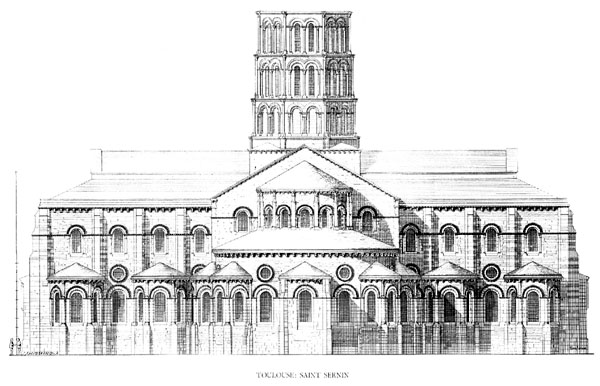|
Sala Baganza
Sala Baganza (Parmigiano dialect, Parmigiano: ) is a ''comune'' (municipality) in the Province of Parma in the Italy, Italian region Emilia-Romagna, located about northwest of Bologna and about southwest of Parma. Sala Baganza borders the following municipalities: Calestano, Collecchio, Felino, Fornovo di Taro, Parma, Terenzo. Some 5 km from town, on the road to Collecchio, is the Pieve di Talignano, a small 12th-century church in Romanesque architecture, Romanesque style. Other sights include: *''Rocca Sanvitale, Sala Baganza, Rocca Sanvitale'': Former castle/palace of the Sanvitale (family), Sanvitale family, used later by the Duchal rulers of Parma as a hunting lodge and country palace *Casino dei Boschi, a large 18th-century countryside residence that, among the others, was used by Marie Louise, Duchess of Parma *Castello di San Vitale Baganza - in a hamlet south of Sala Baganza *San Vitale, Sala Baganza, San Vitale: 10th century church near the Castello di San Vitale mention ... [...More Info...] [...Related Items...] OR: [Wikipedia] [Google] [Baidu] |
San Vitale, Sala Baganza
San Vitale is a Roman Catholic parish church located in the San Vitale neighborhood of Sala Baganza, region of Emilia-Romagna, Italy. The Neoclassical architecture, Neoclassical church houses altarpieces by Giuseppe Peroni, including a ''Madonna between Santi Gregorio and Vitale''. A small parish church at the site is first mentioned by the year 1005. By 1142, the church and the nearby castle and hamlet belonged to the Abbey of San Giovanni Evangelista of Parma. In the 18th century, a bell-tower was erected, but this and the church were partially ruined by an earthquake on 14 February 1834. The church was rebuilt using designs of Lorenzo Raschi; work completed by 1841. The facade was designed by Luigi Bianchi, and completed in 1868. The facade statuary, attributed to Agostino Ferrarini, was added in 1885. In 23 December 2008, an earthquake again damaged the building, and restructuring and restoration was completed in 2012. [...More Info...] [...Related Items...] OR: [Wikipedia] [Google] [Baidu] |
Felino
Felino (Parmigiano: ) is a ''comune'' (municipality) in the Province of Parma in the Italian region Emilia-Romagna, located about west of Bologna and about southwest of Parma. As of 2011 it had a population of 8,621. History The town developed around the castle, built in 9th century, and the municipality was established in 1806. The town is the traditional home of Salame di Felino, along with other cities in Parma. Geography Felino is in the western area of the Province of Parma, and its territory is part of the Boschi di Carrega Nature Park. The municipality borders with Calestano, Langhirano, Parma and Sala Baganza. It counts 13 hamlets (''frazioni''): Main sights The main attractions are a castle, Castello di Felino (dating to the 9th century AD and destroyed by Ludovico Sforza in 1483, but now restored) and the museum of salami, a typical food of the area. Twin towns * Cumières, France [...More Info...] [...Related Items...] OR: [Wikipedia] [Google] [Baidu] |
Marie Louise, Duchess Of Parma
Marie Louise (12 December 1791 – 17 December 1847) was an Austrian archduchess who reigned as Duchess of Parma from 11 April 1814 until her death. She was Napoleon's second wife and as such Empress of the French and Queen of Italy from their marriage on 1 April 1810 until his abdication on 6 April 1814. As the eldest child of Francis II, Holy Roman Emperor and Emperor of Austria, and his second wife, Maria Theresa of Naples and Sicily, Marie Louise grew up during a period of continuous conflict between Austria and revolutionary France. A series of military defeats at the hands of Napoleon Bonaparte had inflicted a heavy human toll on Austria and led Francis to dissolve the Holy Roman Empire. The end of the War of the Fifth Coalition resulted in the marriage of Napoleon and Marie Louise in 1810, which ushered in a brief period of peace and friendship between Austria and the French Empire. Marie Louise agreed to the marriage despite being raised to despise France. She was ador ... [...More Info...] [...Related Items...] OR: [Wikipedia] [Google] [Baidu] |
Sanvitale (family)
Sanvitale is an Italian surname. It may refer to: People * Antonio Francesco Sanvitale (1660–1714), Italian Roman Catholic cardinal * Federico Sanvitale (1704–1761), Italian mathematician and Jesuit * Francesca Sanvitale (1928–2011), Italian novelist and journalist * Galeazzo Sanvitale Galeazzo Sanvitale (died 8 September 1622) was a Roman Catholic prelate who served as Archbishop of Bari-Canosa (1604–1606). ''(in Latin)''Gian Galeazzo Sanvitale (1496–1550), Italian condottiero, also known as Galeazzo I Sanvitale ** Portrait of Galeazzo S ... [...More Info...] [...Related Items...] OR: [Wikipedia] [Google] [Baidu] |
Rocca Sanvitale, Sala Baganza
The Rocca Sanvitale or Sanvitale Castle of Sala Baganza is a fortress/palatial residence located on Piazza Gramsci #1, overlooking the small town of Sala Baganza, just southwest of Parma, region of Emilia-Romagna, Italy. It is distinct from the more-visited moated castle of Rocca Sanvitale, Fontanellato. The structure was initially a walled fortress built in 1477 by Gilberto III Sanvitale. Originally the fortress had a walled internal courtyard with surrounding wings and towers, of which only a single one remains. In 1612 a putative conspiracy to depose Ranuccio I Farnese led to the execution of major feudal lords of the Duchy, including the countess of Colorno, Barbara Sanseverino, and her son Girolamo Sanvitale, the Farnese confiscated the properties of the Sanvitale family. They proceeded to refurbish his property, commissioning frescoes from Orazio Samacchini, Bernardino Campi and Cesare Baglione. Adjacent and to the North of the palace is the Assunta oratory, commissio ... [...More Info...] [...Related Items...] OR: [Wikipedia] [Google] [Baidu] |
|
_-_L'ingresso_del_Castello.jpg)

